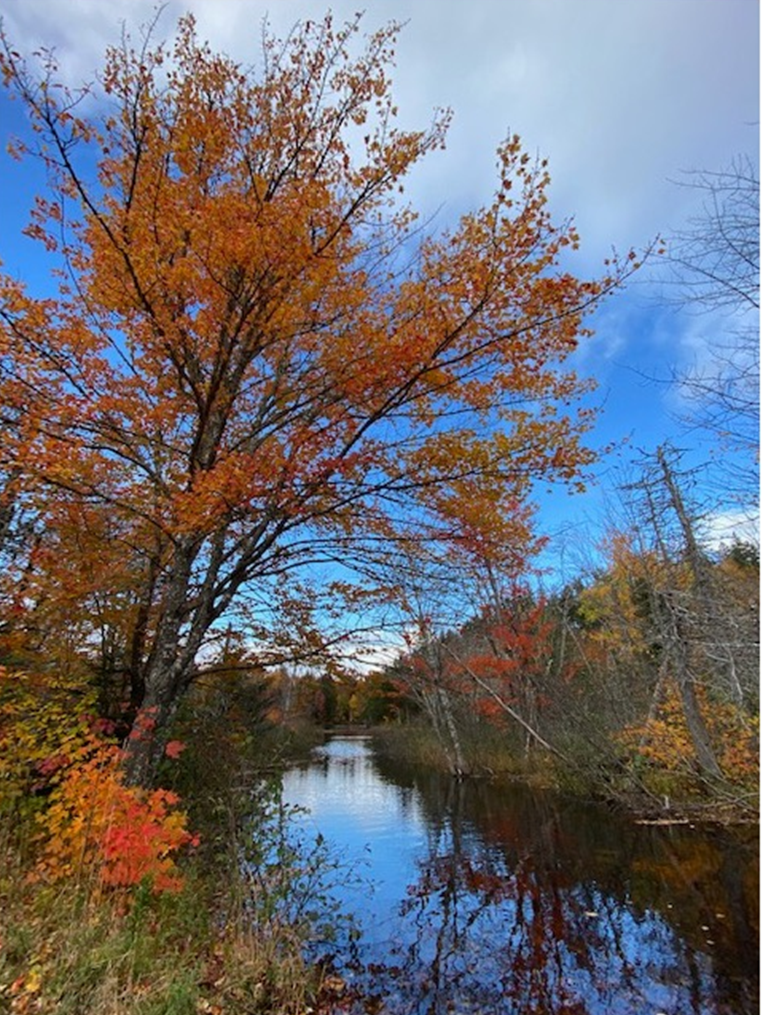Before any Europeans trod in Nova Scotia, the Mi’kmaq were stewards of the land, with a network of their own hunting trails, and hunting and harvesting grounds throughout the province.
It is the goal of Wasuek Googoo to preserve and share this ancient knowledge.
To that end, Wasuek, the Infrastructure Program Manager with the Union of Nova Scotia Mi’kmaq (UNSM), spoke to Sports and Recreation Committee members about a potential project that will see the restoration of old Mi’kmaw hunting trails, using traditional place names.
To get to this point, Wasuek spent a great deal of time hiking, consulting old land surveys and maps in Mi’kmaq, French and English, piecing together the complex and sophisticated way the Mi’kmaq have traditionally understood and lived within the landscapes of Mi’kma’ki.
“Fishing and hunting grounds were always huge activities for us,” she said.
Her Aug. 22 presentation in Membertou entailed ideas and work she has done for a potential program she hopes to initiate, to increase historical and cultural awareness of ancient Mi’kmaw trails and their usage.
Wasuek’s work took her from mountaintops to the beds of dried rivers and waterways and the deep woods, finding signs of past use and occupation by the Mi’kmaq People.
Wasuek told committee members that old Mi’kmaw trails can be identified by trail markers, pointing to water sources, such as bent – culturally modified – trees.
‘We would always leave inscriptions, they could be carved into rock and trees, and those would tell clan names, kin names, what types of animals you’d find on the trails, or mountain, medicines you could forage, type of terrain… and if there are any water sources,” Wasuek said.
“As markers, guides and hunters would start bending trees as they were young, so over time, as the trees grew, they’d eventually be pointing toward something, typically sometimes burial grounds.”
Other means of identifying old Mi’kmaw trails include inscriptions on rocks and trees, the remnants of old hunting grounds and former Mi’kmaw settlements – and the presence of artifacts.
Wasuek said she’s gone to places to Parrsboro, and confounded conventional local knowledge of where the Mi’kmaq dwelt, finding artifacts like quartz arrowheads in a place she was told she’d not find them.
Wasuek explained that finding many old trails and settlements involve exploring the meaning of old Mi’kmaq place names, which often are verb-based and tied directly to the land, with some old Mi’kmaq names for places referring to what animals are hunted in a particular area.
“Time is of the essence,” Wasuek said, noting her work takes place in Nova Scotia’s forests that range from 150 to 200 years old.
“I know there is urgency in my work because I know these trail markers are going to fall, and what evidence is there after that?”
Wasuek told committee members she hopes to develop a program that would accurately tell the Mi’kmaq stories associated with the many former trails in the province, by sharing content.
“There is so much room for us to Mi’kmaq-ify the signage, with our own artists. We could have Mi’kmaq wording, too. Right n now there is Mi’kmaq, English, Gaelic and French on signs, and we want to be the first language on there.”

